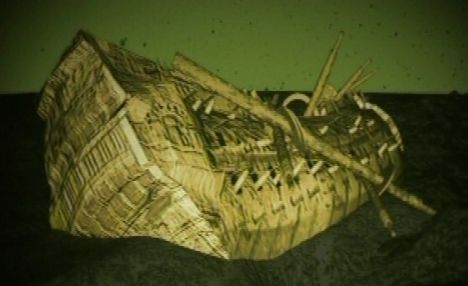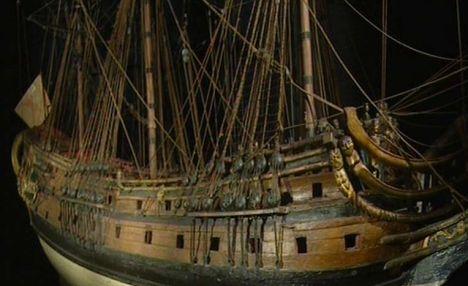In 2008, one of the largest post-war salvage operations on the Thames, discovered seven shipwrecks that dated back to as much as 350-years. Wreckage found included a warship blown up in 1665, a yacht that had been converted to a World War II gunboat, and a mystery wreck in which divers found a personalized gin bottle. The vessels were sitting in the Thames Estuary and were only a select few of the 1,100 ships that went down in the river in total.
The salvaging was done by Wessex Archaeology and the Port of London Authority, which regulates the river for both historical and practical reasons. Jagged metal from the wrecks stick out of the mud, silt, and gravel, acting like a can opener, which can tear apart passing vessels, especially the large container ships that skim only a half meter off the riverbed.
The whole excavation process was filmed by the BBC and took four months to complete. The operation used about a dozen divers; they had 3D survey equipment for locating the wrecks, since there is absolutely no visibility in the river.
The lead marine archaeologist, Frank Pope, said that this was the first time the 3D surveying and excavation process has been done on the large scale. They were trying to clear depths at 16 meters in order to get large ships through safely.
Here are the ships that were studied:

HMS London was the oldest wreck found near Southend. It was collected by Charles II from Sweden during the Restoration. The ship was able to carry 90 cannons and was blown up accidentally in peacetime in 1665. The explosion occurred just a year after its launch, killing 300. However, 24 people, including one woman, survived the blast. Samuel Pepys had written about the ship in his diary.

An unnamed Tudor Thames brick barge was found close to the HMS London. There were hundreds of yellow Kent bricks found onboard the wreckage.
The Dovenby was a 70-meter, three-masted steel cargo ship that was carrying guano for fertilizer from Peru to Antwerp. It sank in 1914 after crashing into the steamship Sindoro in fog just north of the Isle of Sheppey. The helmsman was killed.
HMS Aisha was a yacht that was requisitioned to become a part of “Dad’s Navy” in World War II. It ended up hitting a mine just north of the Isle Sheppey in October, 1940.
A pottery carrier, one of seven that sank during the 19th century between Dovenby and the brick barge, was also found in the river. It was known as a Bawley boat and was used for shrimping.
The mystery wreck was labeled as 5051 and was found just south of Canvey Island. It went down in 1862. A gin jug was found on the wreckage which was marked “Mr. White”, who happened to be the owner of the Crown and Anchor, Woolwich.
SS Letchworth was a collier that was sunk in November, 1940 by the Luftwaffe while enroute from Blyth to London. It sank off Southend and all men survived.
Some of the items found on the various ships included cups, plates, well-preserved leather shoes, bricks, the rare steel sailing mast of the Dovenby, and a deck beam from the Aisha. The hope of finding any treasure or well-preserved cannons was not met. However, salvage teams realized that some of the boats had previously been scavenged shortly after the ships went down. Divers had used upturned bells to allow them to work underwater and manage to save valuable bronze cannons from the HMS London soon after it sank.
The chief executive of the Port of London Authority, Richard Everitt, said that his is the second largest operation since submarine defenses were removed at the end of World War II. He also added that carrying out this process provides important records for British history and is very important for London’s economy.